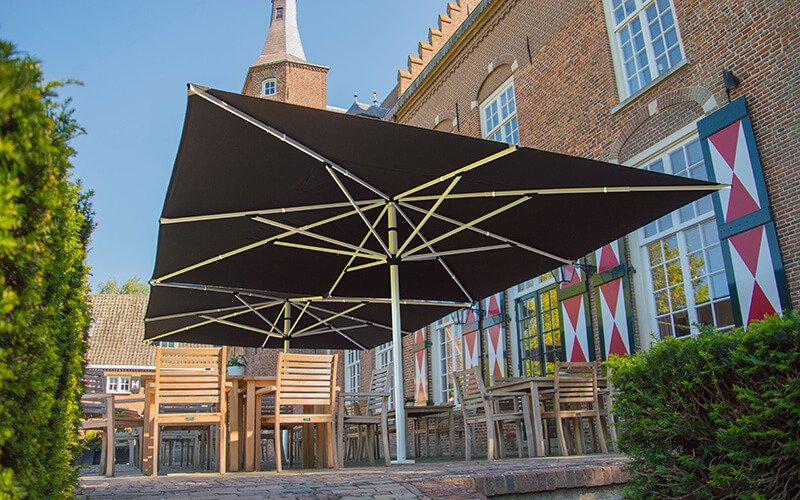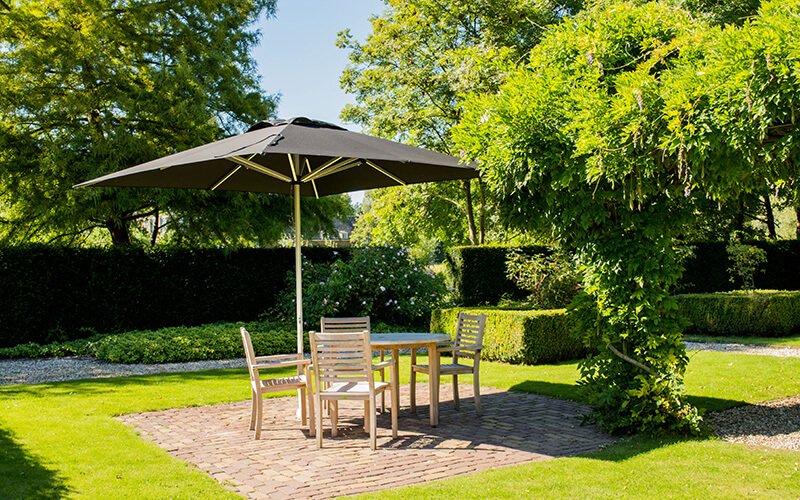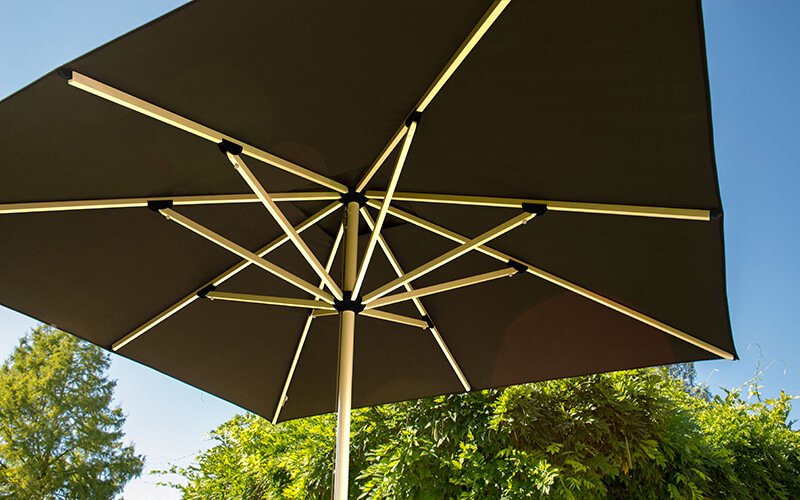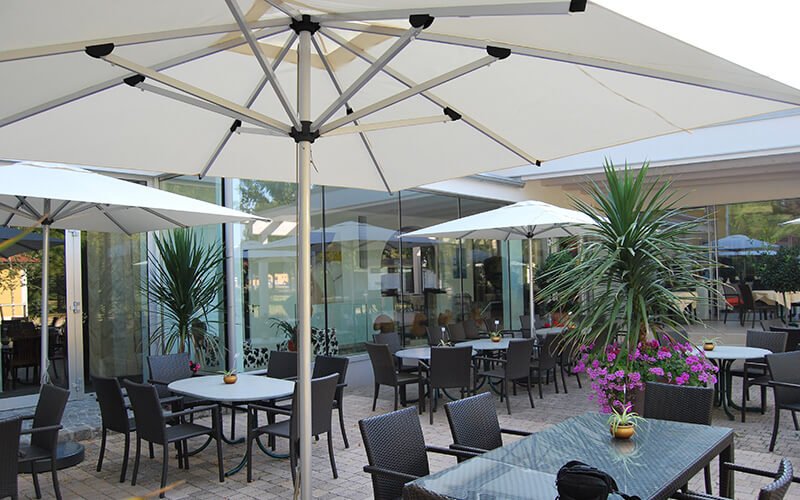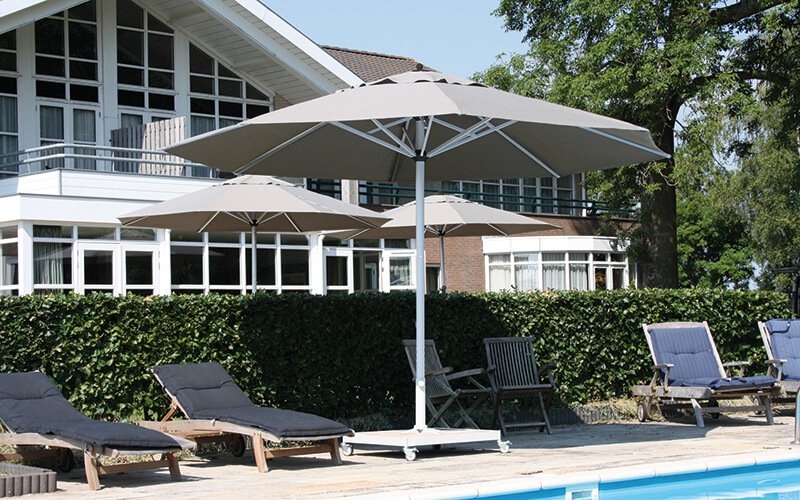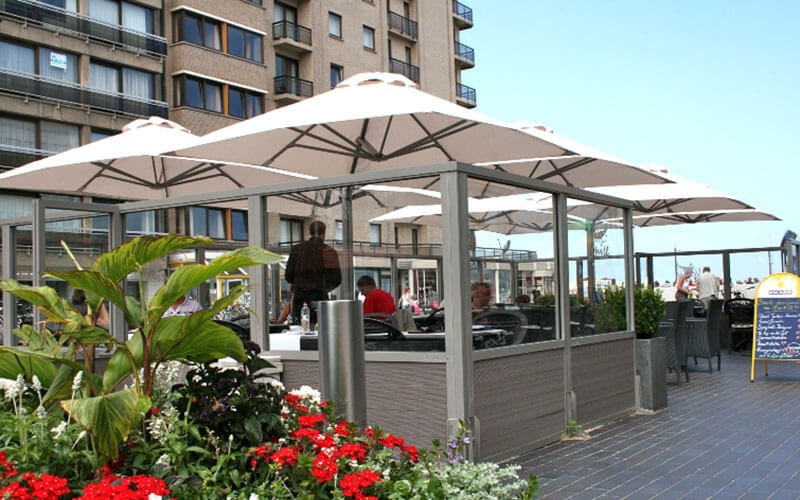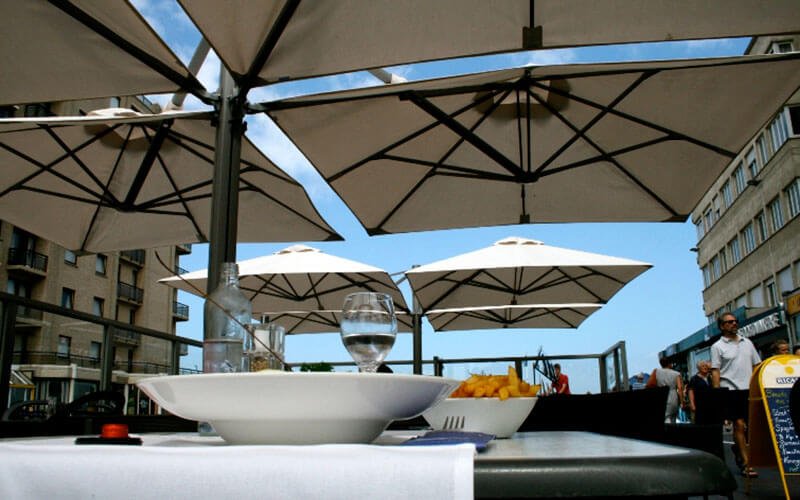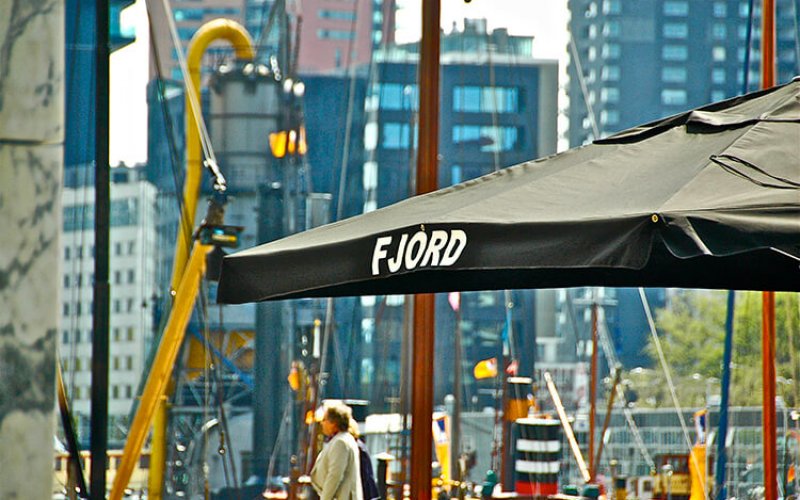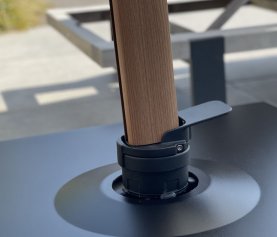We briefly delve into the history books: We classify the speed of the wind with the system of the Irishman, Francis Beaufort, who drew up the Beaufort scale in 1805. At the time, he was an officer in the Royal Navy and developed the scale which is still in use today. Based on the behaviour of his ship, which reacted to the wind forces, rather than the measured speeds of the wind itself. In 1838, the Royal Navy made the Beaufort scale the mandatory method for recording the wind force indication in the ship’s log.
Our rule of thumb is: when you can no longer sit outside comfortably, it’s time to close the parasol. The wind forces described below are purely indicative, due to the ideal conditions of the wind tunnel tests as indicated below, no rights can be derived from the values. Always judge the wind force yourself; when in doubt, it is best to close the parasol. We advise you to never leave the parasol unattended for a longer period of time in order to avoid unnecessary damage.
Wind tunnel tests
The wind resistance of each parasol is tested in a special wind tunnel. These tests are always carried out under ideal conditions. The wind comes from the right angle and only blows horizontally. In our opinion, this is not a correct representation of reality and we have therefore extensively tested our parasols in the real Flemish weather. In strong gusts of wind, sultry summer breezes and even quite strong winds. This has been tested when the parasol is horizontally in the open position. When the parasol is tilted, as is possible with the Cielo, Laterna, Fratello and Palestro Pro parasols for instance, these indications do not apply.
Windkrachten & Solero® parasols
| Model | Recommended maximum | Explanation |
|---|---|---|
| Basto Pro | 6 Beaufort (39-49 km/h) | Large branches in motion, whistling heard in telegraph wires |
| Maestro Pro | 5 Beaufort (29-38 km/h) | Large branches in motion, whistling heard in telegraph wires |
| Fuerto Pro | 5 Beaufort (29-38 km/h) | Small trees in leaf begin to sway, crested wavelets form on inland waters. |
| Presto Pro | 5 Beaufort (29-38 km/h) | Small trees in leaf begin to sway, crested wavelets form on inland waters. |
| Lasagna Pro | 5 Beaufort (29-38 km/h) | Small trees in leaf begin to sway, crested wavelets form on inland waters. |
| Sublimo Pro | 5 Beaufort (29-38 km/h) | Small trees in leaf begin to sway, crested wavelets form on inland waters. |
| Teatro Pro | 4 Beaufort (20-28 km/h) | Raises dust and loose paper, small branches moved. |
| Palestro Pro | 4 Beaufort (20-28 km/h) | Raises dust and loose paper, small branches moved. |
| Laterna Pro | 4 Beaufort (20-28 km/h) | Raises dust and loose paper, small branches moved. |
| Fratello Pro | 4 Beaufort (20-28 km/h) | Raises dust and loose paper, small branches moved. |
| Cielo Pro | 4 Beaufort (20-28 km/h) | Raises dust and loose paper, small branches moved. |
| Vaticano Pro | 3 Beaufort (12-19 km/h) | Leaves and small twigs in constant motion, light flags extended. |
Your parasol when closed
Closed with a cover, a parasol can handle almost any wind force, but that also depends on the weight of the chosen parasol base.
Wind in the garden
If the wind in your backyard is above average higher than 4 Beaufort (20-28 km/h), we advise you to choose a parasol that can stay open until 5 Beaufort. If you prefer a free-hanging model, the Solero Fuerto Pro, for example, is a suitable option. If you prefer a parasol with the pole in the middle, the Lasagna Pro is a good alternative. The Lasagna is built up in layers so that the wind easily blows through the fabric and has no grip on the parasol.
Wind at the coast
If you have a terrace or garden on the coast, we recommend a parasol of 5 or 6 Beaufort. Sublimo, Fuerto, Patio, Lasagna, Presto, Maestro and Basto Pro are very suitable options. By opting for installation using a ground anchor that is poured into the concrete, you will be selecting the most solid construction that can be enjoyed for years to come.
Storm damage
Nothing is as unpredictable as the weather. If your parasol was accidentally left open while a storm was raging, it may have incurred storm damage. We understand that this is very frustrating; fortunately, Solero has almost all parts in stock and we do our utmost to repair your parasol as efficiently as possible. In many cases you can do this yourself; in some cases, our mechanic will have to take care of it.
Which base in high-wind situations
In high-wind situations, we always encourage the use of a ground anchor. With concrete, the lower part of the ground anchor is poured into the ground. As soon as the concrete has hardened, you can mount the parasol on it. The advantage is that your parasol is as solid as a house, the disadvantage is that the parasol can no longer be moved without additional accessories.
Wind vent
Have you ever walked through a heavy rainstorm with an umbrella? Then you know the powerful jolting of the wind against the inside of your umbrella. If that wind had an exit point, carrying your umbrella would be much lighter, right? That’s why we’ve equipped most of our parasols with a wind vent. The air can escape through the open roof, which makes the parasol stand firmer. Naturally, you still remain dry under the canvas as the layers overlap each other so that the rain doesn’t stand a chance. This vent also functions as ventilation as warm air rises in the summer and leaves the parasol. This keeps your head cool.
Are you struggling to find a suitable parasol for your garden or terrace? We are happy to visit you to assess the situation; our experts know everything about wind and will provide complimentary advice about the best options. Of course, you are also very welcome in our showroom to experience for yourself how sturdy our parasols are. Feel free to give our canvas a tug so you can see with your own eyes how solid the frame is.


